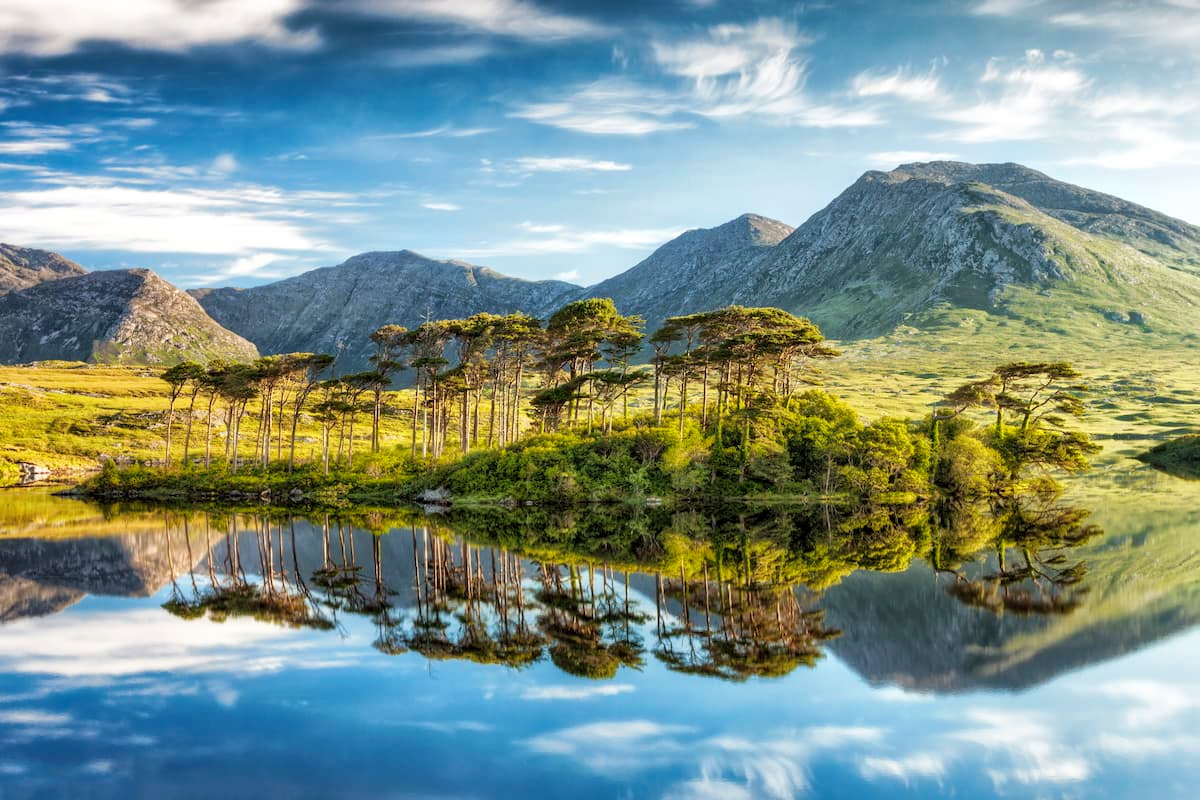
Ireland’s Wild Atlantic Way is a 1’900-kilometer coastal route that hugs the western coastline of Ireland, from the Cliffs of Moher in County Clare to the Old Head of Kinsale in County Cork. This stunning route is known for its dramatic scenery, including towering cliffs, rugged coastline, and charming villages. It is also a haven for wildlife, with dolphins, whales, and seals often seen in the waters. The Wild Atlantic Way is a perfect destination for bikepacking, as there are numerous trails and routes to choose from, as well as plenty of accommodation options along the way.
What to expect?
The route is generally considered to be moderate in difficulty with its 17’000 meters of climbing, but there are some challenging sections, such as the climbs over the Connemara Mountains. Apart from that you’re going to cycle through rather remote parts, so it is important to be prepared for self-sufficiency. However, the scenery is so stunning that the challenges are worth it.
Planning
There are a few things you will need to consider when planning your Wild Atlantic Way bikepacking adventure. First, you will need to decide how many days you want to spend cycling. The route is around 2,500 miles long, so you could complete it in as little as a week or as long as a month. Second, you will need to choose a route. There are numerous routes to choose from, so you can tailor your ride to your own preferences. Third, you will need to pack for the weather. Ireland is known for its changeable weather, so be sure to pack waterproof gear and be prepared for all types of conditions. Finally, you will need to make accommodation arrangements. There are plenty of guesthouses, B&Bs, and hostels along the way, so you should not have any problems finding a place to stay.
Highlights

Image source: Wikipedia.org
The Cliffs of Moher: They’re located at the southwestern edge of the Burren region in County Clare, Ireland, and they’re one of the country’s most popular tourist attractions. These towering cliffs, rising majestically from the Atlantic Ocean, stretch for over 14 kilometers and plunge dramatically into the sea, reaching an elevation of 214 meters at their highest point.

Image source: discoverireland.ie
The Aran Islands: The group of three islands off the coast of Galway, Ireland, are renowned for their rugged beauty, rich history, and unique culture. These islands, Inishmore (Árainn), Inishmaan (Inis Meáin), and Inisheer (Inis Oírr), offer a glimpse into a bygone era, preserving traditional Irish ways of life and architecture. Inishmore, the largest and most populated island, is home to the ancient fort of Dún Aonghasa, perched atop a 300-foot cliff overlooking the tumultuous Atlantic Ocean. This Iron Age fort, dating back to 1,100 BC, offers panoramic views of the surrounding islands and coastline. Other notable landmarks on Inishmore include the Seven Churches, a series of early Christian monastic ruins, and the striking Clochán na Carraige, a stone structure with a beehive roof.

Image Source: peakvisor.com
The Connemara Mountains: Also known as the Twelve Bens or Beanna Beola, are a majestic mountain range located in County Galway, Ireland. These peaks rise dramatically from the rugged landscape of Connemara, dominating the skyline and creating a dramatic backdrop for the surrounding valleys, lakes, and bogs. They’re a relatively compact group of mountains, with the highest peak, Benbaun, reaching an elevation of 729 meters. The range is composed of quartzite and schist, while being home to a variety of plant and animal life, including wildflowers, heathers, mosses, and ferns, as well as deer, foxes, badgers, and birds of prey.

Image source: discoverkerry.com
The Dingle Peninsula: This peninsula is located on Ireland’s southwest coast and it’s a picturesque region renowned for its rugged landscapes, charming villages, and rich cultural heritage. It is also home to a thriving population of dolphins, whales, and seals, making it a popular destination for wildlife watching.

Image source: shannonchance.net
The Ring of Kerry: This is one of Ireland’s most popular tourist destinations, and it’s easy to see why. This 179-kilometer (111-mile) scenic drive takes you through some of the most stunning scenery in Ireland, from rugged mountains and lush green valleys to dramatic coastlines and charming villages.
Conclusion
The Wild Atlantic Way is a spectacular bikepacking route that offers something for everyone. From stunning scenery to challenging riding, there is something for every cyclist on this route. Whether you are a seasoned cyclist or a beginner, the Wild Atlantic Way is a great way to experience the best that Ireland has to offer. Since there are plenty of towns alongside the route it will be easy to find accommodation but it is also remote enough to camp outside if you want to enjoy peace and solitude.
I hope you have enjoyed this summary on the Wild Atlantic Way bikepacking route. If you are planning a bikepacking adventure in Ireland, I highly recommend checking out this route and please feel free to ask any questions or share your experience of this region in the comments.

